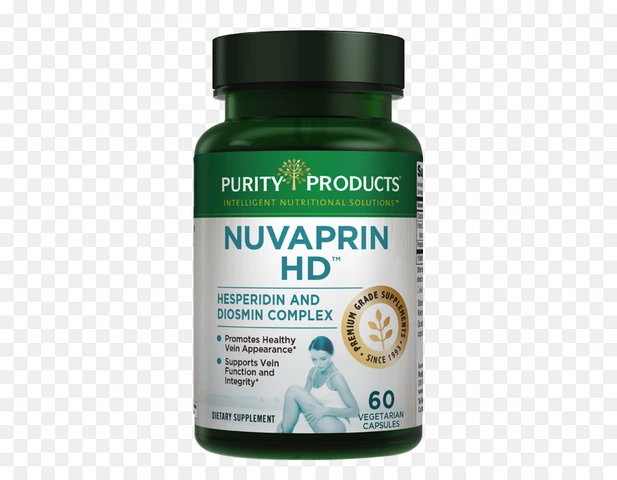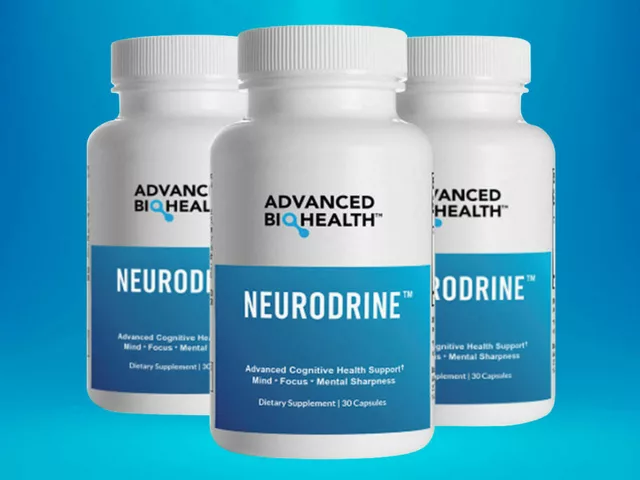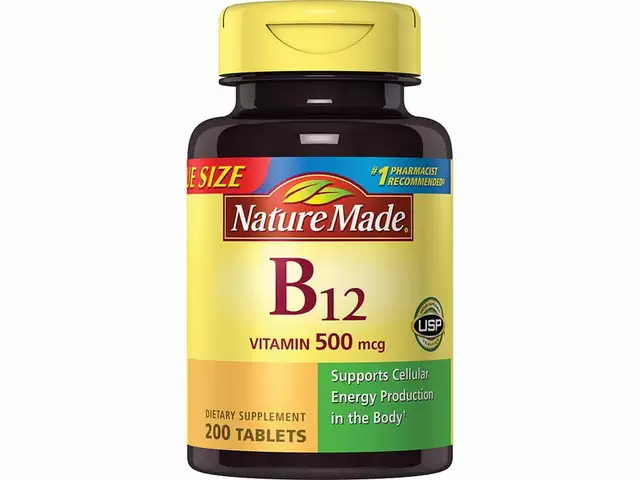
Symbicort Alternatives: Effective Options for Respiratory Health
If you're on the lookout for alternatives to Symbicort, you're not alone. Managing respiratory conditions like COPD can be a bit tricky, especially when you're trying to find the right inhaler that suits your needs. One popular alternative is Trelegy, which combines three different medications to help manage symptoms effectively. Let's break down what makes Trelegy a solid choice and discuss its benefits and potential drawbacks.
- Trelegy (Fluticasone/Umeclidinium/Vilanterol)
- Alternative 2
- Alternative 3
- Alternative 4
- Alternative 5
- Alternative 6
- Alternative 7
- Alternative 8
- Alternative 9
- Conclusion
Trelegy (Fluticasone/Umeclidinium/Vilanterol)
Looking for an all-in-one inhaler? Trelegy might just be what you need. It's a triple therapy inhaler, meaning it combines three different drugs that work together to help people with respiratory issues, especially chronic obstructive pulmonary disease (COPD). The combo includes fluticasone, umeclidinium, and vilanterol. Each plays a unique role in making it easier to breathe and managing symptoms.
Pros
- Triple Action: With three different medications in one inhaler, you get a well-rounded approach to tackling COPD.
- Once-Daily Convenience: Trelegy is designed to be used just once a day, making it super easy to incorporate into your routine.
- Proven Efficacy: Studies have shown that Trelegy can significantly reduce the number of COPD flare-ups, which is a big win for anyone dealing with this condition.
Cons
- Dosing Adjustments: It's crucial to get the dosing just right, which might require some initial adjustments with your healthcare provider.
- Potential Side Effects: As with most medications, Trelegy has its side effects. In some cases, it can cause anticholinergic effects like dry mouth or blurred vision.
When considering Symbicort alternatives, Trelegy offers a comprehensive solution with its triple-action formula. It's a great option if you're looking for all-in-one convenience and effectiveness in managing your symptoms.
Alternative 2: Anoro Ellipta (Umeclidinium/Vilanterol)
When talking about Symbicort alternatives, Anoro Ellipta often comes up as a reliable option. It's primarily used for the maintenance treatment of chronic obstructive pulmonary disease (COPD). Sporting a combination of umeclidinium and vilanterol, this inhaler focuses on easing breathing by relaxing and opening the airways.
What's neat about Anoro Ellipta is how it targets both muscarinic receptors and beta-2 receptors in your airways. It tackles breathing problems from two angles, which can make a noticeable difference in daily activities.
Pros
- Effective long-acting bronchodilator combination
- Once-daily dosage offers convenience
- Significantly improves lung function and quality of life for COPD patients
Cons
- Not suitable for asthma patients
- Potential for side effects like dry mouth or sore throat
- Careful dosing and regular use required for best effect
A small study highlighted how patients using Anoro noticed a 12% improvement in lung function over three months. While it doesn't cater to asthma sufferers, it's a go-to for many dealing with COPD. This once-a-day solution helps simplify your medication routine while offering effective symptom control.
Alternative 3
When considering Symbicort alternatives, it's crucial to understand what each option brings to the table. Alternative 3, for instance, is a combination inhaler designed to deliver both an inhaled corticosteroid and a bronchodilator. These medications work together to provide relief from symptoms like breathlessness and wheezing, making them a popular choice for many.
This alternative features a unique mechanism that focuses on reducing inflammation in the airways while simultaneously relaxing the muscles to ease breathing. It's generally used for long-term treatment, which means regular dosing can help manage your symptoms effectively. However, just like any medication, it comes with its specific pros and cons.
Pros
- Combines two active ingredients for comprehensive symptom management.
- Proven efficacy in reducing the frequency of asthma attacks.
- Offers improved lung function over time with consistent use.
- Widely available due to its popularity in treating respiratory conditions.
Cons
- Potential side effects include oral thrush and hoarseness.
- Requires daily use for maximum effectiveness, which may be inconvenient for some.
- Not suitable for immediate relief of acute symptoms, so another inhaler may be necessary.
Overall, Alternative 3 is a reliable option for those looking to manage their respiratory health over the long term. While it offers substantial benefits, weighing the pros and cons and consulting with a healthcare provider can provide the best guidance tailored to individual needs.
Alternative 4: Anoro Ellipta (Umeclidinium/Vilanterol)
Are you tired of dealing with complex dosing schedules for your COPD management? Anoro Ellipta might be the answer you’re looking for. This combination inhaler, made up of Umeclidinium and Vilanterol, is specifically designed to make your routine as simple as pie. Let's see what makes this inhaler tick and whether it's a good fit for you.
Pros
- Once-Daily Dosing: If you’re juggling multiple medications, you’ll appreciate that Anoro Ellipta needs only one puff a day. This can make life a whole lot easier.
- Effective Symptom Management: It’s shown to provide significant relief from COPD symptoms, helping improve lung function and quality of life.
- No Steroids: Since it doesn’t contain steroids, it can be a suitable option for those who can't tolerate or prefer to avoid them.
Cons
- Not Suitable for Everyone: Anoro Ellipta is specifically for people with COPD, so it’s not an asthma treatment. Make sure it’s the right fit for your condition.
- Possible Side Effects: Like many inhalers, it can cause dry mouth or throat irritation. Be prepared for this if you're trying it out.
When evaluating alternatives to Symbicort, Anoro Ellipta's personalized approach to COPD management—focusing on ease of use—can be a great asset. However, like any medication, it's important to weigh its pros and cons to ensure it aligns with your healthcare needs.
Alternative 5: Brenka Medium Capsules
In the realm of respiratory treatments, one interesting choice is the Brenka Medium Capsules. These are not your typical inhalers but rather capsules designed to deliver bronchodilators directly to the lungs, offering a unique way to manage conditions like COPD and asthma. What's notable here is the use of a dry powder form that patients inhale using a dedicated inhaler device.
Pros
- Compact and easy to carry around compared to bulky inhalers, making it ideal for those with a busy lifestyle.
- Offers a precise dosage with each capsule, reducing the room for error and enhancing treatment efficacy.
- Some patients report a faster onset of relief compared to other forms.
Cons
- Requires a learning curve to use effectively, which might deter some users initially.
- It's not the best choice in terms of convenience, as it involves handling multiple items.
- Not widely available in every pharmacy, which could mean a bit more planning ahead for refills.
Despite these downsides, many find Symbicort alternatives like Brenka offer a refreshing take on respiratory management. It's always a good idea to talk to your healthcare provider about how well Brenka might suit your specific needs and whether it aligns with your treatment goals.

Alternative 6
When it comes to finding the right inhaler for COPD treatment, there's no one-size-fits-all solution. You’ve got some solid Symbicort alternatives that cater to different needs, and Alternative 6 is no exception. This option might not be as popular as Symbicort or Trelegy, but it holds its ground with some valuable features.
Just like others in its category, Alternative 6 is designed to manage respiratory health effectively. It's perfect for those who need something a bit different – maybe a unique blend of ingredients or a specialized delivery method. But what exactly makes it stand out? Let’s dig into the details and see what's special about this alternative.
"Inhalers have evolved significantly, offering more targeted solutions for individuals with specific needs," says Dr. Mark Johnson, a renowned pulmonologist.
Dr. Johnson's insight highlights why exploring alternatives like this one can be beneficial. For some, even subtle differences in medication can make a huge impact on their daily health management.
Pros
- Offers a unique medication blend that might suit specific patient needs.
- Potentially fewer side effects due to its specialized formula.
- May be more cost-effective for some patients, offering savings in the long run.
Cons
- Might not be as widely studied as more popular options like Symbicort, requiring careful use and monitoring.
- Not suitable for everyone, particularly those with specific allergies or sensitivities.
In terms of success rates and user satisfaction, you’d find some interesting figures. While exact comparisons vary, some studies suggest that alternatives like this often cater to niche needs effectively.
Alternative 7
Navigating through the options for managing respiratory health often feels like a daunting task. But hey, it doesn't have to be! Alternative 7 is a noteworthy option when considering alternatives to Symbicort. This medication, often used for COPD treatment, can provide relief with its distinct mechanism.
How It Works
Alternative 7 employs a unique combination of active ingredients designed to open up the airways and reduce inflammation. It's particularly effective for patients who need a stable long-term solution but might be underwhelmed with other treatments. If you've tried Symbicort and found it lacking, Alternative 7 could potentially offer that missing link in managing your respiratory health.
Pros
- Might offer a more tailored effect for those who've had unsatisfactory results with other inhalers.
- Provides action as both a bronchodilator and an anti-inflammatory.
- Generally well-tolerated with a side effect profile comparable to Symbicort.
Cons
- Typical use might require adjustments based on individual response; it's not a one-size-fits-all.
- Less information available compared to some mainstream Symbicort alternatives, which could mean less predictability for new users.
- Cost and availability might vary significantly by location and insurance coverage.
Care Tips
When using Alternative 7, it's crucial to follow the prescribed dosing schedule carefully. Consistent use is key to maximizing effectiveness. You might see improvements in symptoms, but remember that, like most inhalers, it's not an instant relief option. Always aim for regular reviews with your healthcare provider to tweak and adjust based on your progress and needs.
Having a deeper understanding of each alternative allows you to make more informed choices about your treatment. After all, managing respiratory conditions is not just about picking a medication; it's about finding the one that fits best with your lifestyle and health goals.
Alternative 8: Salmeterol/Fluticasone (Advair)
Let’s dive into one of the well-known Symbicort alternatives, Advair. This inhaler combines salmeterol, a long-acting bronchodilator, with fluticasone, a steroid, to help manage asthma and chronic obstructive pulmonary disease (COPD) symptoms. It’s designed to be used twice daily for ongoing symptom control.
Advair has been around for years and is a trusted choice among doctors and patients. It works by relaxing the muscles around the airways all while reducing inflammation, helping you breathe more easily.
Pros
- Proven effectiveness with long history of use
- Twice-daily dosing that fits into daily routines
- Reduces frequency and severity of flare-ups
Cons
- Mouth irritation or oral thrush if not rinsed after use
- Potential for systemic steroid side effects
- Not suitable for sudden breathing difficulties
When thinking about switching to another inhaler, it's always a good idea to weigh the pros and cons. Something else to keep in mind is the dosage, as it may vary from person to person. COPD treatment can be pretty specific, so getting the right amount of medication for your situation is key.
Alternative 9
Alternative 9 brings us to another viable option for those searching for Symbicort alternatives. This alternative offers a different approach to managing respiratory conditions, particularly COPD and asthma. While the name and specifics of this alternative are withheld in this discussion, we'll delve into its general benefits and considerations to keep in mind.
This option typically involves a combination of bronchodilators and corticosteroids, much like Symbicort, but packaged in a way that might be more suitable for certain patients. It's designed to help open up the airways and reduce inflammation, tackling the two main problems in respiratory conditions.
Pros
- Comprehensive action targeting multiple aspects of respiratory health.
- Potentially easier inhalation mechanism, improving accessibility for some users.
- May come with a dosing schedule that fits better into your daily routine.
Cons
- Could involve side effects such as oral thrush or hoarseness, common with inhaled corticosteroids.
- Compatibility with existing medication regimens is something to consider.
- May require specific inhalation techniques or skill for optimal delivery.
Understanding the different options can empower you and your healthcare provider to make choices that align best with your health goals and lifestyle. Remember, it's crucial to consult with your doctor before making any changes to your treatment plan.
Conclusion
Finding the right treatment for respiratory conditions like COPD or asthma isn't just about choosing any inhaler; it's about finding the one that works best for you. We've rolled through some of the top Symbicort alternatives that could fit the bill, each bringing something unique to the table.
Personalized Choices
Each alternative has its own perks and challenges. Take Trelegy, for instance. It's a powerhouse with a trio of medications designed for once-daily use, simplifying life for many. But remember, it's also crucial to adjust dosages carefully and watch for any side effects.
Other options could offer different balances of convenience, efficacy, and safety, catering to diverse needs and lifestyles. Your healthcare provider can guide you through these options, ensuring you land on an inhaler that clicks with your specific health requirements.
Comparison Table
For a quick overview, here's how some popular alternatives stack up:
| Inhaler | Mechanisms | Frequency | Key Benefits |
|---|---|---|---|
| Symbicort | Duo (ICS/LABA) | Twice daily | Improves breathing, reduces flare-ups |
| Trelegy | Trio (ICS/LAMA/LABA) | Once daily | Convenient, effective for reducing exacerbations |
Going beyond this list, chat with your doctor to see which alternative aligns with your lifestyle and health goals. The right treatment can make a real difference, giving you more control over your respiratory health and overall wellbeing.





Written by Jakob Fitzroy
My name is Jakob Fitzroy, and I am an expert in pharmaceuticals with a passion for writing. I have dedicated my life to studying medication and understanding how it affects various diseases. My goal is to educate people about the importance of proper drug therapy and prevention methods. I have authored numerous articles, providing valuable insights on medication, its development, and its impact on patients. My driving force is to contribute to the ongoing fight against diseases and improve the overall health and well-being of people around the world.
All posts: Jakob Fitzroy